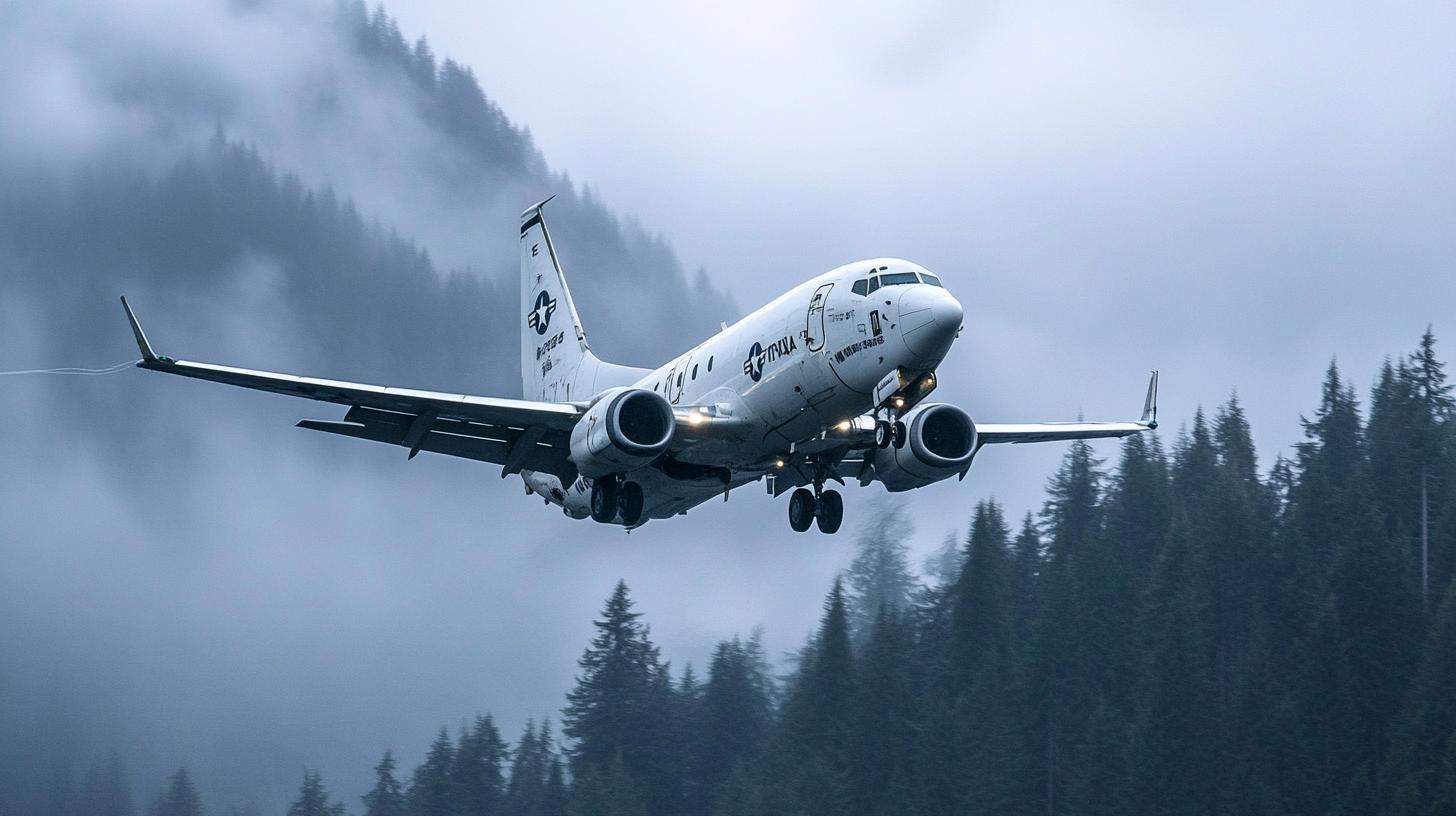The wreckage of a U.S. Navy EA-18G Growler fighter jet was discovered on Wednesday after crashing in the rugged terrain of Washington state’s mountains during a training exercise. The aircraft, part of the Electronic Attack Squadron stationed at Whidbey Island, went down east of Mount Rainier around 3:23 p.m. on Tuesday. Despite locating the wreckage, the two crew members remain unaccounted for.
A concerted search effort was underway, utilizing both aerial search teams and an MH-60S helicopter launched from NAS Whidbey Island. These teams are focusing on the site nestled on a mountainside, where the wreckage was spotted at 12:30 p.m. The Navy is working to dispatch search units to the remote location, which is challenging to reach by land vehicles, with anticipated snowfall in the region complicating matters further.
Officials have not confirmed whether the crew had time to eject prior to the crash. The aircraft’s disappearance and the conditions surrounding it are under investigation. The EA-18G Growler, akin to the F/A-18F Super Hornet, is equipped with advanced electronic warfare systems and is primarily based at Whidbey Island, with one squadron stationed in Japan.
The “Zappers,” as known, had recently been deployed on the USS Dwight D. Eisenhower. With production starting in 2008, the Growlers have since been integral in global military operations. Each jet, valued at approximately $67 million, has a pilot and an electronics operator onboard.
The incident highlights the inherent risks involved in military aviation training. Similar incidents have occurred, such as the crash of an F-35 in New Mexico and the fatal accident involving a CV-22B Osprey off Japan’s coast last year.
The Impact of Military Aviation Accidents on Communities and Countries
Military aviation accidents, such as the recent crash of a U.S. Navy EA-18G Growler in Washington state, have significant and far-reaching impacts on individuals, communities, and even countries. These events underscore the dual-edged nature of military operations that are both essential for national security and potentially perilous.
Community Concerns and Response
When a military aircraft crashes, it profoundly affects the local community. Residents near crash sites often experience anxiety and fear about safety and potential hazards, such as debris or unexploded ordnance. In the case of the EA-18G Growler, the search effort required a coordinated response involving not only military personnel but also local emergency services. The logistics of search and rescue operations in remote or rugged areas can strain local resources, especially when weather conditions, like the anticipated snowfall in Washington, add to the complexity of the mission.
Environmental Impact
The crash of military aircraft can lead to environmental concerns. Aircraft debris may contaminate the soil and water if fuel or other hazardous materials are present. Cleanup operations must be careful and thorough to mitigate any environmental damage. Communities often demand transparency and accountability from military organizations to ensure that environmental standards are upheld during such operations.
National Implications and Controversies
On a broader scale, incidents like the Growler crash raise questions about military readiness and the safety protocols in place for aircraft and personnel. The EA-18G Growler, an electronic warfare aircraft, plays a crucial role in modern combat operations by jamming enemy radar and gathering intelligence. The loss of such an asset prompts concerns about operational capabilities and the allocation of funding for military training and technology.
There is also a controversial debate about military presence and training activities in various regions. While military installations contribute to local economies and provide jobs, some residents and environmental groups oppose the increased risk associated with military operations. They argue for tighter regulations and better communication between military leaders and local communities.
The Human Element
Perhaps most importantly, the human element cannot be ignored. The loss or potential loss of crew members affects families, friends, and colleagues, serving as a stark reminder of the personal risks undertaken by military personnel. Investigations into the causes of such accidents are crucial for providing closure to affected families and preventing future tragedies.
In summary, military aviation accidents like the EA-18G Growler crash have multifaceted impacts on people and places. They highlight the need for robust safety measures, responsive support systems for affected communities, and a balanced discourse about the role and presence of military operations domestically and internationally.
For more information on military aviation safety and operations, you can visit trusted sources such as the U.S. Department of Defense and the U.S. Navy.







